A few pointers to keep in mind when using choke collar
If you do decide to use a choke collar for training your dog, learn to handle it properly so you don’t land up hurting your dog by mistake. Furthermore, never leave the choke caller unattended on your dog as they pose a threat of strangulation.
With change slip or choke collars, there are a few secrets dog trainers and guardians must know to allow for effective training. Once the dog understands that a strong correction will be administered once he or she misbehaves, a strong correction won’t be needed. A light correction as a warning will be enough to deter the dog from engaging in the unwanted behavior.
The leash or chain must be of the perfect length so the corrective tug can travel to the dog and administer the correction. If the leash is long or loose, the tug would lose its effectiveness by the time it reaches the dog. If the leash us too short, the collar would tighten too quickly and may become a choking hazard.
Metal prong collars
These are possibly the harshest looking dog collars available in the market. However, many dog trainers find these types of dog
training collars to be very effective for training of stubborn and strong dogs who have a tendency to constantly pull on the leash. Metal prong collars are also referred to as pinch collars. These collars are primarily used for the purpose of correction during the training process. They work similar to the choke collars. Just like the choke collars, these metal prong collars must never be left unattended on your dog as they pose risk of causing strangulation.
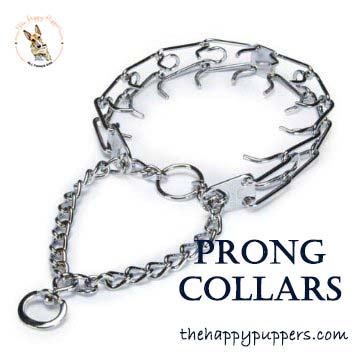 |
| Metal prong collars work similar to choke collars |
Martingale dog collars
These collars are also referred to as greyhound collars or limited slip collars. As the name suggests these collars are specifically designed to prevent the dog from slipping out of the leash during walks or when on leash.
These types of dog collars tend to tighten when the dog pulls on the leash, thus preventing too much leash pulling. However, they also have a stopping mechanism which prevents the collar from closing in on the throat of the dog completely. These collars are most often make of nylon. Even though these collars are specifically recommended to be used with sighthounds, they can also be used with dogs belonging to other breeds.
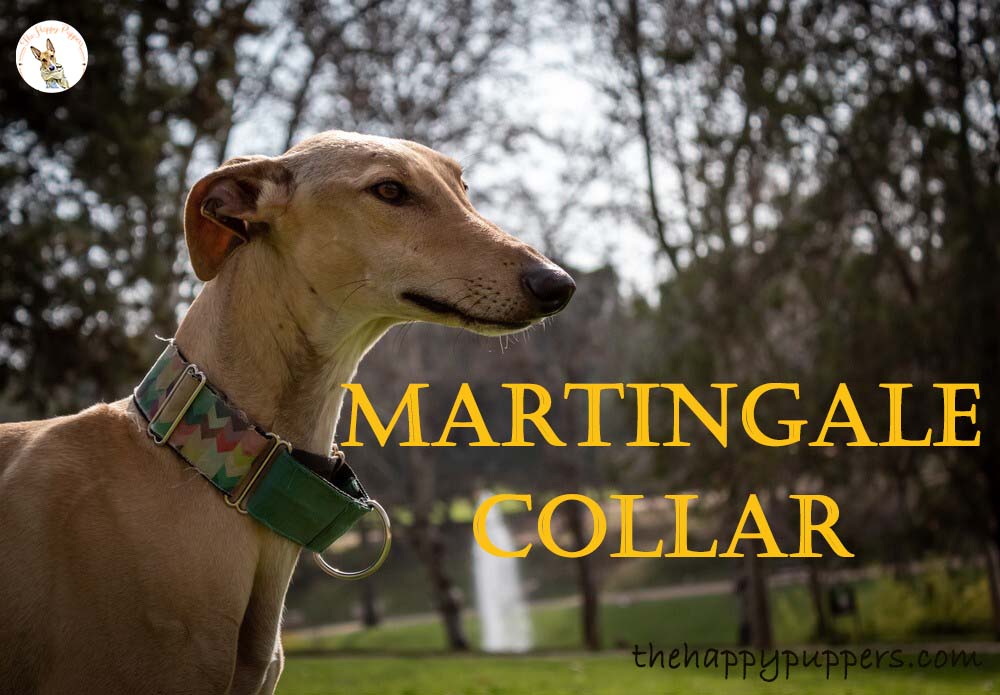 |
| Martingale collars are anti-slip collars |
Head collars
A lot of time people confuse head collars with muzzles. However, both have very different purposes. Head collars act as harnesses for head. These are specifically used to
train the dog to walk on leash. When the dog tries to pull the leash, the halter or the head collar causes the dog’s head to turn. This is an uncomfortable experience for the dog and prevents the unwanted behavior.
Head collars can be very useful to discourage pulling and help with other forms of training as well. When using head collars, be very careful as to not leave it on the dog unattended. Furthermore, it is advised that head collars should also not be used with very long leashes.
Harness
This would be my favorite choice amongst all the different types of dog collars available in the market.
Harnesses are placed around the dog’s abdomen and chest region. They cross over on the back where the leash is attached. The hook for attaching the leash is either present on the back or on the front depending on which type of dog collar the guardian chooses. A lot of dog guardians prefer to use harnesses over collars since the harness does not put pressure on the neck.
There is a conflict amongst trainers regarding whether harness make for a good dog training option or not. A lot of dog trainers believe that harnesses encourage the dog to pull. Therefore, collars should be used for training purposes. However harnesses are definitely a good option for dogs who have medical issues in the neck region.
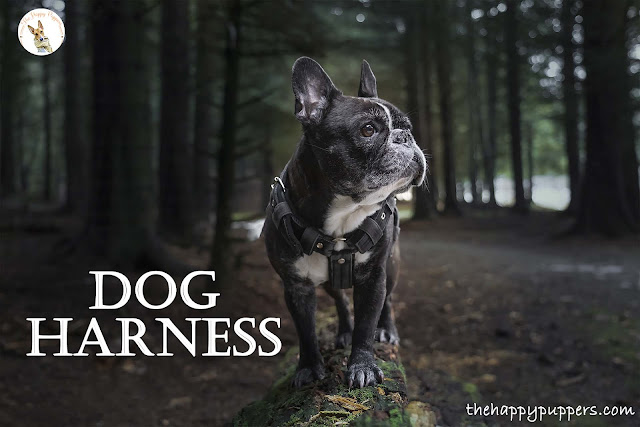 |
| Dog harness is the best option for dogs with eye issues or brachycephalic facial structure |
Dog show collars
These types of dog collars are mainly made of nylon, leather or metal. You will mainly notice these types of dog collars being used in dog shows.
E collars
Electronic collars or
shock collars or e collars are the types of dog collars which work on using negative reinforcement to correct the unwanted behavior of the dog. These collars have a metal region on the inside which is in contact with the neck of the dog. The collar can impart electrical shocks and vibration of varying degrees to the dog when prompted by pressing the button on the remote which is with the guardian.
There are many different
types of shock collars with smart technology available. These come with various attributes like embedded GPS tracking to track your dogs location, ability to monitor behavioral changes in your dog and assistance to help you change your dog. Most of these collars come with smartphone applications. Some of these collars may even have Wi-Fi coverage and be waterproof.
Their are mixed reviews about e collars. A lot of certified dog trainers are against the use of e collars as the shock can cause mental and physical impairment to the dog. However, other dog guardians and trainers are of the opinion that when used in low settings e collars can be the best training collars for dogs.
Some e collars come with a vibration feature as well. The vibration can be used as a warning before the shock is delivered to the dog. Eventually, when the dog learns how e collars work, only the vibration might be enough to deter the dog from engaging in the unwanted behavior, since he will understand that shock follows the vibration.
Some dog guardians also choose to only use the vibration feature of the collar. alternatively, one can also opt for vibration collar only.
Personal opinion
I am foster mom to 15 dogs who live on the streets and I have a son by the name
Delta Bunny. I am well versed with dog behavioral patterns and most often why
dogs react aggressively. I believe that shock collars, prong collars and choke collars are not the solution to effective dog training. Such collars hurt your dog. They work on negative reinforcement or punishment driven correction. Would you try to train your child this way? But hurting him or her excepting her or she does a mistake?
Dogs are family. If you won’t treat your family member this way, dogs do not deserve such treatment as well. They love you abs will give their life for you. Is this how they deserve to be repaired for their love and loyalty? I deal with dogs who have no homes. They live on the streets. If I can get these so called ‘feral dogs’ (as referred to by others. Personally these kids are just misunderstood by those who don’t want to understand dogs) to behave like adorable teddy bears then you can obviously get your dog trained without using aversive methods.
Punishment is never the solution to the problem. Time, patience and lots of treats is the answer to good
dog training. If your dog forgets a command, retrain him. Punishment is never the answer. If you decide to go for a shock collar, shock yourself before you use it on your dog. I am pretty sure you will never use it on your pup if you love him or her. For those dog guardians who argue that the fur of the dog reduces the impact of the shock, I’d say use it on your head to understand the effect.
Shock collars are not a humane option for dog training. Behave with others the way you want to be behaved with. Dogs are family, not a commodity to own. I cannot imagine buying a shock collar, poop prong collar or choke collar for
Delta or any of my kids, much less use it on them. Even the thought is enough to send shivers down my spine.
Other articles you might be interested in:
Conclusion
Forming a positive or negative opinion about specific type(s) of dog collars is very easy, especially when the guardian or trainer does not have the right knowledge of the purpose and utility of the types of dog collar. Every collar has its own pros and cons. Which type of dog collar you choose for your dog will depend on your needs and requirements. However, do not go for shock collars ever.
Most people who use positive reinforcement techniques for dog training would not be in favor of choke collar or harness while those who are in favor of negative reinforcement will have high opinions about the same.
Now that you have an overview of all types of dog collars, which is your favorite one and why? One final piece of advice is that no collar should be left on the dog on a permanent basis. Once the dog is gone, the collar must be removed.
If you have any query pertaining to this blog post or others, feel free to contact me on any of my social media channels or leave your queries in the comment section. I will be happy to help.
Frequently asked questions

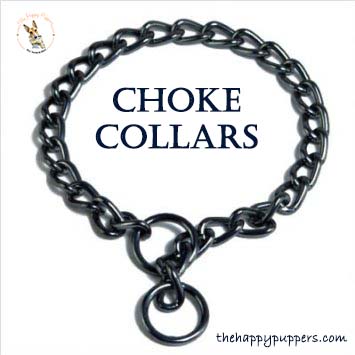



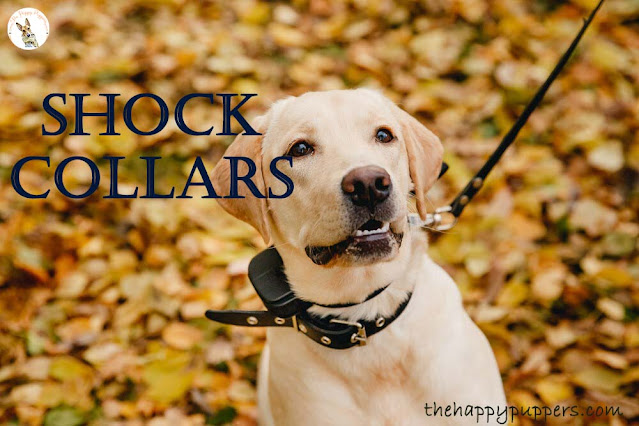


3 Comments
Great wordpress blog here.. It’s hard to find quality writing like yours these days. I really appreciate people like you! take care
What i don’t realize is if truth be told how you’re now not really a lot more well-preferred than you may be now. You are so intelligent. You understand therefore significantly in the case of this matter, produced me personally imagine it from numerous various angles. Its like men and women aren’t fascinated until it is one thing to accomplish with Woman gaga! Your personal stuffs outstanding. At all times take care of it up!
Admiring the persistence you put into your site and in depth information you offer. It’s good to come across a blog every once in a while that isn’t the same outdated rehashed information. Great read! I’ve bookmarked your site and I’m adding your RSS feeds to my Google account.